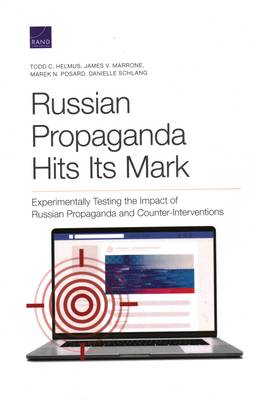
- Retrait gratuit dans votre magasin Club
- 7.000.000 titres dans notre catalogue
- Payer en toute sécurité
- Toujours un magasin près de chez vous
- Retrait gratuit dans votre magasin Club
- 7.000.0000 titres dans notre catalogue
- Payer en toute sécurité
- Toujours un magasin près de chez vous
Russian Propaganda Hits Its Mark
Experimentally Testing the Impact of Russian Propaganda and Counter-Interventions
Todd C Helmus, James V Marrone, Marek N Posard, Danielle Schlang
Livre broché | Anglais
41,95 €
+ 83 points
Description
Given the size and scope of the Russian propaganda campaign that targeted the U.S. electorate in 2016, it is critical to understand the impact of that campaign and mechanisms that can reduce the impact of future campaigns. This report, the third in a series, describes a study that assessed how people react to and engage with this propaganda, and found that media literacy advisories and labeling the source of the propaganda had a counter effect.
Spécifications
Parties prenantes
- Auteur(s) :
- Editeur:
Contenu
- Nombre de pages :
- 102
- Langue:
- Anglais
Caractéristiques
- EAN:
- 9781977405944
- Date de parution :
- 30-09-21
- Format:
- Livre broché
- Format numérique:
- Trade paperback (VS)
- Dimensions :
- 152 mm x 229 mm
- Poids :
- 149 g

Les avis
Nous publions uniquement les avis qui respectent les conditions requises. Consultez nos conditions pour les avis.






